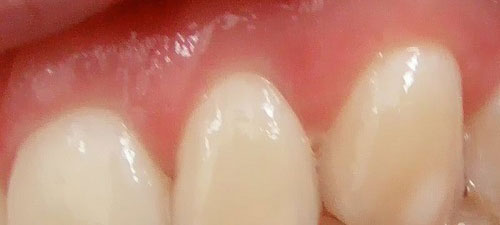 We thought a good topic this month would be receding gums. There is a lot of info online on this topic to weed through, some of it contradictory and other bits are quite technical. We thought it might be useful for our patients and patients-to-be to have a concise source of information backed by our knowledge and experience as professional, trained and experienced dentists:
We thought a good topic this month would be receding gums. There is a lot of info online on this topic to weed through, some of it contradictory and other bits are quite technical. We thought it might be useful for our patients and patients-to-be to have a concise source of information backed by our knowledge and experience as professional, trained and experienced dentists:
What causes gums to recede?
- Brushing too hard and/or using a medium or hard bristle toothbrush.
- Gum disease.
- Clenching or grinding of the teeth or other chewing oral habits.
- Smoking.
- Tooth misalignment.
- Hormonal changes in women.
- Plaque.
- Diabetes.
- Orthodontics.
- Oral Piercings.
- Genetics.
What are the symptoms of receding gums?
- Sensitivity to touch, temperature, and sweet food/drinks.
- Exposed root.
- Red and sore gums.
- Teeth that look longer than usual.
- Root decay.
- Stained root surfaces.
How do you prevent gums from receding?
- To prevent gums from receding, have regular dental visits. The hygienist will clean away the plaque and calculus (tartar) that can lead to gum disease.
- Use a soft or extra soft bristled tooth brush and don’t be too aggressive with your brushing. Take more time and care to brush (at least 3 minutes) and don’t rush to press too hard. Place brush at a 45 degree angle and use a “jiggle and pull away” motion from the gum line. Replace your brush minimum every 3 months. Change it before this if your bristles bend or fray or you feel your brush is not doing a good job. Change your brush after illness as your bristles harbour bacteria. Consider using a rechargeable electric toothbrush. These brushes do the work for you so all you need to do is hold the bristles at the gum line and let the machine do the cleaning.
- Take the same steps as you would to prevent gum disease. These being a good oral hygiene routine including regular brushing, flossing, rinsing, and dental checkups.
- Wear a night guard if you clench or grind your teeth. During the day be aware of clenching/grinding. When your jaw is at rest your teeth should be slightly parted. Teeth should only touch when chewing.
- Visually inspect and keep an eye on your own gums. It is important to see the dentist if the gums look like they are starting to recede. A delay in treatment can lead to more costly and invasive treatment being necessary.
- Limit your intake of sugar and acidic foods and don’t use tobacco. Sugar and acidic foods create an environment for the bacteria to cause tooth decay on exposed tooth surfaces. Keeping the mouth in a neutral pH state and consuming healthy non-processed foods really helps to keep the teeth and gums healthy. Tobacco is harmful to the health of the gums, even smokeless tobacco is very harmful.
- Reduce stress in your life. Stress increases clenching and grinding. Stress can aggravate gum disease as it lowers your immune system.
What is the treatment for receding gums?
Preventative treatment is the best as the only predictable treatment is gum grafting. Grafting involves tissue being taken from another area such as the roof of the mouth and grafted on to the area.
Can the gums heal themselves?
You can get some limited reattachment of the gums to the tooth but once you get recession there is not much that can be done without surgery.
How to fix receding gums is a fairly common topic in our Vancouver dental office. Please book and appointment to come in and consult with us. You can call 604.738.1816 to schedule an appointment. We have a vast amount of experience between our four dentists and are happy to help you get back on the road to healthy gums!





